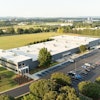Root Cause Analysis (RCA), a process used to identify the root causes of problems or events, is arguably the most powerful piece of equipment available in the proactive maintenance “toolbox.” RCA is designed to discover not only what or how something happened, but why it happened, and also determines the underlying causes of an event so proper corrective measures can be implemented to prevent any reoccurrences.
RCA Priority
In a normal manufacturing environment including many different assets, a large number of problems or events occur every day raising the question: which problems are immediate candidates for RCA? This question is an important one because determining the answer helps manage the process as problems occur.
Since organizations don’t have unlimited resources, it is imperative to focus the RCA process on problems that, once solved, will bring the most benefits. Good candidates for RCA are those issues that reoccur most often, require the most resources to be rectified, or cause the most damage when they occur. Obviously, if a problem is creating safety issues, it is critical to determine the root cause of the problem and resolve it quickly.
Know Your Enemy
The RCA process involves defining the problem, isolating issues that caused the problem, identifying the root cause, developing actions to address the root cause, implementing the actions and conducting follow up assessment of the actions to ensure their effectiveness. Some of the most commonly used tools in the root cause analysis process are:
- 5 Whys.
- Pareto Analysis.
- Ishikawa (fishbone) diagram.
- Fault tree analysis.
The “5 Whys” tool involves asking why at least five times, which would then normally lead to the root cause of a given problem. The basic steps can be characterized as follows:
- What happened? – Describe the effect.
- Why did it happen? – Describe at least two potential causes.
- Repeat the process until the root cause is found (typically at least 5 times).
80/20
The Pareto Analysis allows the selection of a limited number of causes that produce a significant overall effect. This tool is based on the 80/20 rule, which states that a large number of problems (80 percent) are produced by a few key causes (20 percent).
A simple use of the Pareto Analysis is to list all problems along with their frequency, sort the list by frequency, and then focus on the problems that occur with the highest frequency.
Sweat The Details
The Ishikawa, or fishbone diagram is a graphic tool used to explore and display the causes behind a problem. Possible causes are categorized and shown as main “bones” in the diagram. The team involved in this analysis assists by making suggestions until the entire cause and effect diagram is complete. With the entire fishbone diagram complete, team discussions take place to decide on the most likely root causes of the problem. These causes are circled to indicate items that should be acted upon.
Fault tree analyses are performed using a top-down approach. Starting with a top-level event, fault tree analysis is performed by working down to evaluate all the contributing events that may ultimately lead to the occurrence of the top-level event. The resulting fault tree diagram is a graphical representation of the chain of events in the system or process. The probability of the top-level event can then be determined by using mathematical techniques.
People, Equipment, Processes
In conclusion, root cause analysis is a clear process to utilize for determining what happened, how it happened and why it happened. Most root causes can be categorized in three areas: people, equipment and processes. The people category can be improved through training and leadership, the equipment through better operation and maintenance practices, and the processes through optimization and continuous improvement.
About ATS: ATS makes factories run better. Advanced Technology Services, Inc. (ATS) improves productivity and profitability for many of the world’s most respected manufacturers through the managed services of production equipment maintenance, information technology and spare parts repair.
For more information, visit the ATS website at www.AdvancedTech.com.


















